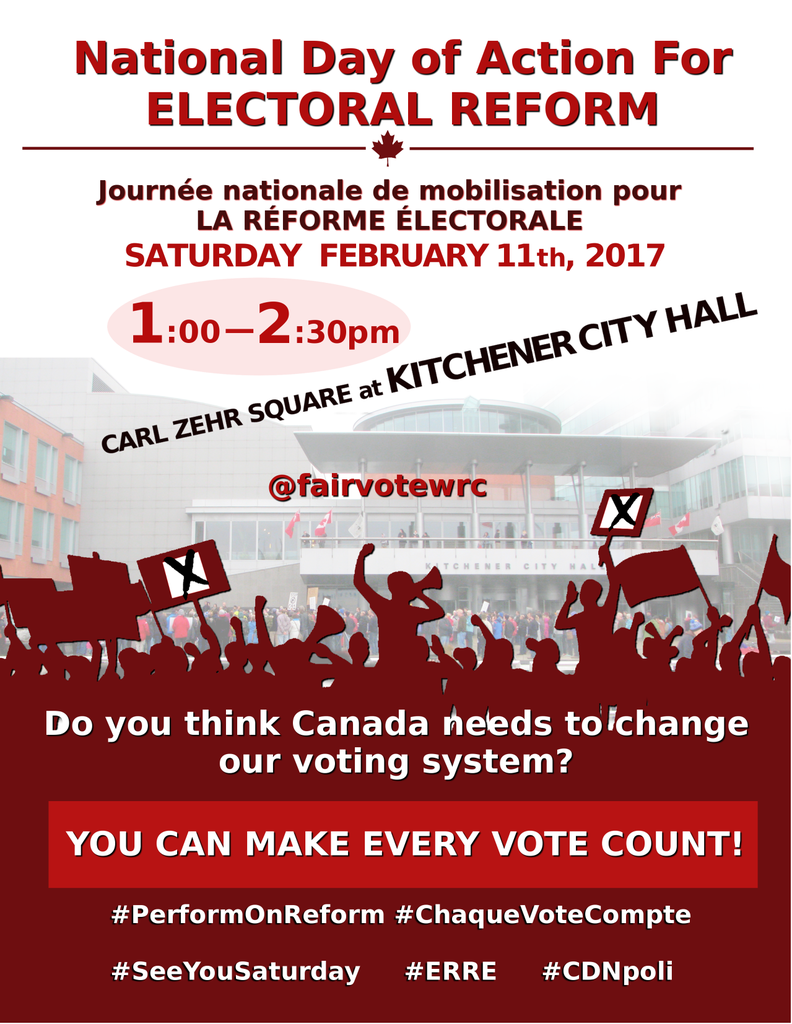To Waterloo staff and councillors:
Thank you for the opportunity to give input on the review of our zoning bylaw.
My response pertains mainly to Residential zones. At the end I’ll add some brief ideas on Commercial and Employment zones.
These are the underlying assumptions I am bringing regarding what kind of residential areas would be desirable to live in:
- Remember that we are building neighbourhoods.
- Every neighbourhood needs to include green spaces and gathering spaces that facilitate casual encounters with one’s neighbours.
- Neighbourhood green spaces should be small, frequent, and linked together if possible — user-friendly.
- Every neighbourhood needs to be walkable and cyclable. No overly long blocks should be allowed, especially if they block access to amenities. Where these mistakes have already happened — on Lester St. and Marshall St. — the city must do its utmost to buy back an easement to insert a walkway. Plus easements to continue these walkways right through to the LRT station beyond Phillip St. and from Lodge St. to the plaza. Extremely important that we find a way to do this.
- Neighbourhoods would also benefit from having a community centre. Please zone in space for them. Make sure that a conversation is open between staff working on zoning and those developing a neighbourhood strategy.
- Fewer parking spaces should be required for houses, apartments, and condos.
- Many apartments and condos could be offered without parking. That is, less than one parking spot per unit.
- In fact a maximum number of cars should be set, because of the nuisance that cars pose to neighbours. In the vicinity of my house several driveways are being used as parking lots for multiple cars, continually coming and going, so that it’s never peaceful to go to my front yard. I think anything above two cars on a residential lot should have to pay some kind of fee or penalty.
- What this city lacks most is housing for the whole bottom half of the market, everyone from median income on down. No one is building for them. The young, the pensioners, and the people who serve us coffee, take care of the elderly, clean offices, and provide security at events, should be able to live among us in decency. Providing for this huge demographic should be a prime goal of zoning bylaws. We especially lack lower-end rental units.
- Every neighbourhood should be planned to include a mix of income levels, and a mix of ownership and rentals.
- As soon as Inclusionary Zoning becomes available in Ontario — expected in fall 2016 — Waterloo should make use of it for all new development.
- If density bonusing is used (and I’m not sure it ever should be), the green space and/or affordable housing created should have to be in the same neighbourhood.
- In traditional neighbourhoods we should make it easier to create secondary units, frequently without parking, to bring lots of affordable housing onstream.
- And why should we care if a family wishes to use a one-bedroom-plus-den unit as two bedrooms to make it affordable for them? The city should not be in the business of harassing and micromanaging people. Making developers change dens to dining rooms will prevent all residents from having a home office/computer room or guest room. We should do a lot less micromanaging!
- Finally, every neighbourhood should be visually appealing and where possible reflect the uniqueness of Waterloo and its heritage. New development should fit its context.
I hope these assumptions I’m coming from are also shared by Waterloo officials. How might they apply to the specifics of the zoning bylaw?
Discussion Paper on GENERAL REGULATIONS 2.10 Secondary Dwellings
If a house is spacious enough, why couldn’t it have a basement apartment and/or a coach house unit and/or an upstairs apartment or main floor addition, or even all of these?
Why should it matter that an apartment or coach house be with a detached house and not a semi-detached or townhouse?
Why couldn’t municipal services be connected up to a detached garage in the future (at the owner’s expense); why should the connection have to have existed prior to this bylaw?
Why should it matter what percentage of the floor area of the main dwelling the secondary dwelling is?
Why should every added unit have to have parking?
What DOES matter is that there be adequate green space on the property, that the added units meet standards of safety, space, and decency, and that noise bylaws be enforced. The lot frontage doesn’t matter. Whether the entrance faces the street or the side yard doesn’t matter. We need to pick our battles, so to speak.
I think we should encourage house designs that lend themselves to the future creation of accessory apartments. Give people choice. If a family wishes to create a unit for an elderly parent or a grown child, or both — or if a young homeowner or a widow wishes to add a “mortgage helper” apartment — make it easy to do these things. It should be expected that people will do it. Get rid of the rules that don’t matter. Allow there to be some units designated as no parking.
In this way hundreds of affordable accommodations could be added in the city very quickly, blending into their neighbourhoods and with no ghettoization.
Discussion Paper on LOW-DENSITY RESIDENTIAL
As above, we should anticipate greater density being added by homeowners over the years, and don’t let rules about bedrooms per hectare restrict this too much. It’s the gentlest way to increase density and provide much needed affordable housing.
Discussion Paper on HIGH-DENSITY RESIDENTIAL
I’ve only been able to view a map covering from Erb Street to University Avenue so it’s hard for me to pinpoint locations in the rest of the city.
I think our city needs more RMU-20 throughout the city to provide affordable rentals, now that the province allows frame construction up to six storeys. Not having to provide costly underground parking should allow more affordable units to be built. Don’t require a parking spot for every unit, especially Uptown.
Two good locations for RMU-20 are close to me in the core: Bridgeport Road between Peppler Street and Laurel Creek, and the houses just north of 151 King Street North.
Please change the zoning of 151-161 King Street North so that 151 with its tasteful-density additions is preserved, and the homes between there and the 12-storey building on the corner are designated RMU-20. Best use for that location.
The Bridgeport Road site could have RMU-20 closest to the homes on Peppler, and could step up to RMU-40 nearer the creek. I hope the city will facilitate removing the H provision where the gas station used to be (in front of the carpet warehouse). A good site for development, but not 25 storeys.
These suggestions would both decrease an 81 to a 20. But I’m happy to see an upgrade to RMU-20 proposed for Weber Street, Bridgeport/Royal, and Erb Street East and West. Another spot that should be upgraded to RMU-20 is the apartments at 29 Elgin Street — I’m not sure why it’s shown as R4 on the map. I would also be OK with some R-8 townhouses on King Street between Central Street and 151 King Street North, blending in with 151. That could fit nicely. Alternatively this corner might be a good location for a community centre serving both MacGregor-Albert and Uptown North. Something to think about.
I don’t think there should be any RMU-81 on King between Elgin and Noecker, and perhaps Marshall. (What happened at King/Noecker/James is a ghastly mistake, and I believe the city owes SERIOUS restitution to the St. Sofia church congregation for permitting this encroachment.) I suggest we need a category in between RMU-40 and RMU-81. Say RMU-50, which would allow 14 or 15 storeys. Existing neighbourhoods could more easily live with that.
Less than one parking space per unit should be required, in all of the above. Mandate more and better bicycle parking (this shouldn’t be a “bonus” point but basic). And we need to keep pushing the Region for better transit and be willing to contribute more revenue for it.
So I’m saying: more RMU 20, more allowance for accessory units in R 1-4, less parking, more bike parking, and no 25-storey towers: change RMU-81 to RMU-50.
This option is more affordable for everyone, allows neighbourhoods to feel coherent, and preserves the character of the city.
Discussion Paper on OPEN SPACE …
I like the vision of “urban open space system within built-up areas”. But I didn’t see anything about improving general walkability by avoiding overly long blocks.
Walk/cycle links need to be restored where poor planning in the recent past failed to provide for them: Hickory, Lester, Phillip to LRT and Brighton, Marshall, Lodge to plaza. This must be a high priority, so neighbourhoods can breathe again.
As mentioned above, it is urgent that the city buy an easement for a walkway close to the end of Hickory Street, or else all of Northdale will be locked in forever and frustrating to live in. And make sure the walkway continues all the way to the LRT station and University of Waterloo campus, with some green space along the way.
As for Lodge Street, there’s still time to acquire the land and build a walkway from Lodge Street to the plaza, while working to find a way to get an easement through to Marshall. Please make this a priority.
The ditch running behind University Plaza is a good potential place for green space. Would it be possible to extend it out to Weber and to Regina? This would provide more foot and bike access to the plaza, reducing bicycles on University. A footbridge (or several) over the ditch to the plaza, some trees and stone benches, and a walkway out to Lodge Street and eventually Marshall and Brighton … Please act now to make this happen! Put it on the zoning map. It could be a gem.
A parkette would also be the best use of the low land around the art gallery between Regina and Peppler. And it could eventually be linked across Peppler to Brighton Park. Please pencil it in and work toward assembling it over the years.
These are two or three examples of walking links and green space potential in my immediate neighbourhood. And are there any plans to complete Laurel Trail from Weber Street to Moses Springer Park? Just five or six houses …
Much more could be done with Laurel Creek uptown as well, as regards green space.
Parkettes need to be an integral part of all future development. As mentioned above, it should not be allowed to “horse-trade” parkland fees for green space far away; the green space should have to be where the development is. Same goes for affordable housing; it should have to be on the site.
Affordable housing, walkability, and green space. Zoning can do so much to enhance them all. In these ways we can build future neighbourhoods that feel safe and fostering for all the diverse ages, incomes, cultures, household types, and occupations of people who will live here.
Here are two articles on visioning urban growth that I found inspirational:
Density at a Human Scale, by Kaid Benfield:
http://www.sustainablecitiescollective.com/kaidbenfield/988196/smart-growth-not-all-urban-density-created-equal
Zoning for Happiness in Edmonton:
http://edmontonjournal.com/news/insight/in-a-happy-zone-how-planning-rules-can-improve-a-neighbourhood-vibe
And new info: Ontario’s Climate Action Plan will legislate away cities’
ability to require parking minimums:
http://tvo.org/article/current-affairs/the-next-ontario/why-parking-spots-in-the-gta-could-get-scarcer-and-pricier
Let me conclude with a few thoughts on Commercial and Employment zones:
Less parking! Less parking! Less parking! I support the points regarding parking made by TriTAG at:
http://www.tritag.ca/blog/2016/03/20/can-the-city-of-waterloo-move-beyond-parking-minimums/
Employment districts in north Waterloo need much better bike and bus access. They need to be much better integrated with the city and include mixed uses.
I also think we need a rule that nothing can be built that’s only one storey. Industrial “parks” are huge space wasters. If production needs to be on one level, some other use could be built above.
There also need to be strong incentives to include on-site renewable energy and green roofs.
Thank you for your time in considering all these suggestions regarding how Waterloo should grow. Our residential areas, and commercial and employment areas too, should promote neighbourliness and inclusion, and commitment to place, and good stewardship.
Eleanor Grant



 WE the citizens have an obligation … and A RIGHT to be informed of what OUR representative ‘politicians’ are up to, and are first CONSULTING with the VOTER not toeing the party line
WE the citizens have an obligation … and A RIGHT to be informed of what OUR representative ‘politicians’ are up to, and are first CONSULTING with the VOTER not toeing the party line


